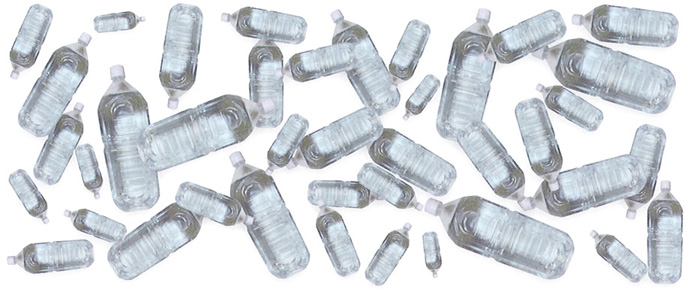 じゃ口の水は,どこから送られてくるのか調べましょう。 じゃ口の水は,どこから送られてくるのか調べましょう。 | Let's find out where the water from the faucet comes from. |
| 水道の水は,家でもたくさん使(つか)われています。よし子さんたちは,たくさんの水が,どこから送(おく)られてくるのかを調(しら)べることにしました。 | A lot of tap water is used in the home as well. Yoshiko and her friends decided to find out where this large amount of water comes from. |
 |
| 家庭(てい)での使用水りょう(しようすいりょう) (2005年) Amount of water used in homes (2005) |
| 使った水のりょう(l) Quantity of water used (liters) | 2lのペットボトル(本) Plastic bottle of 2 liters (bottles) | |
| 一人が一日で by one person in one day | 242 | 121 |
| 一人が1年間で by one person in one year | 88330 | 44165 |
 | 瑞穂町(みずほまち)全員 (33746人)では 2980784180リットル ↓ ペットボトル1490392090本 | For the entire population of Mizuho (33,746 people) 2,980,784,180 liters ↓ 1,490,392,090 PET bottles |
| <家庭(かてい)での水の使われ方>(平成14年度調べ) How water in homes is used (FY2002 survey) | ||
| Washroom, etc.:8% Laundry:17% Kitchen:23% |  | Toilet:28% Bath:24% |
 水道きょくの人の話 水道きょくの人の話みなさんが安心して水を使えるように,川やダムからとった水をじょう水場できれいにしています。きれいになった水を配水かん(はいすいかん)を通して,みなさんの家や学校のじゃ口まで送っています。 | Talking to a person from the Waterworks Bureau. We clean the water from rivers and dams at a water treatment plant so that people are able to safely use the water. The cleaned water is sent to the faucets in your homes and schools through water pipes. |
